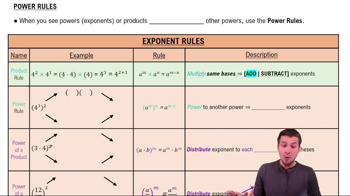Textbook Question
The hyperbolic cosine function, denoted , is used to model the shape of a hanging cable (a telephone wire, for example). It is defined as .
a. Determine its end behavior by analyzing and .
 Verified step by step guidance
Verified step by step guidance Verified video answer for a similar problem:
Verified video answer for a similar problem:



 5:21m
5:21mMaster Finding Limits by Direct Substitution with a bite sized video explanation from Patrick
Start learning